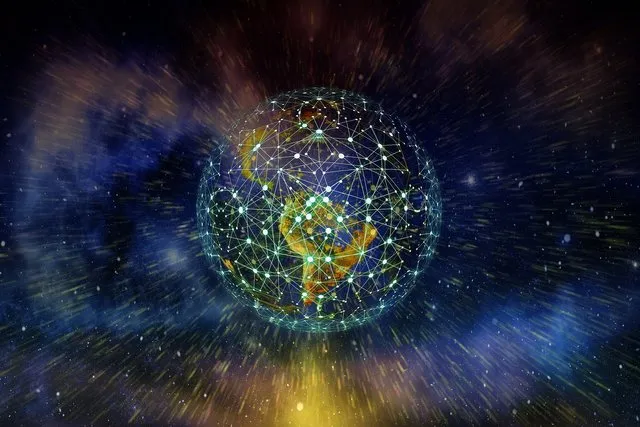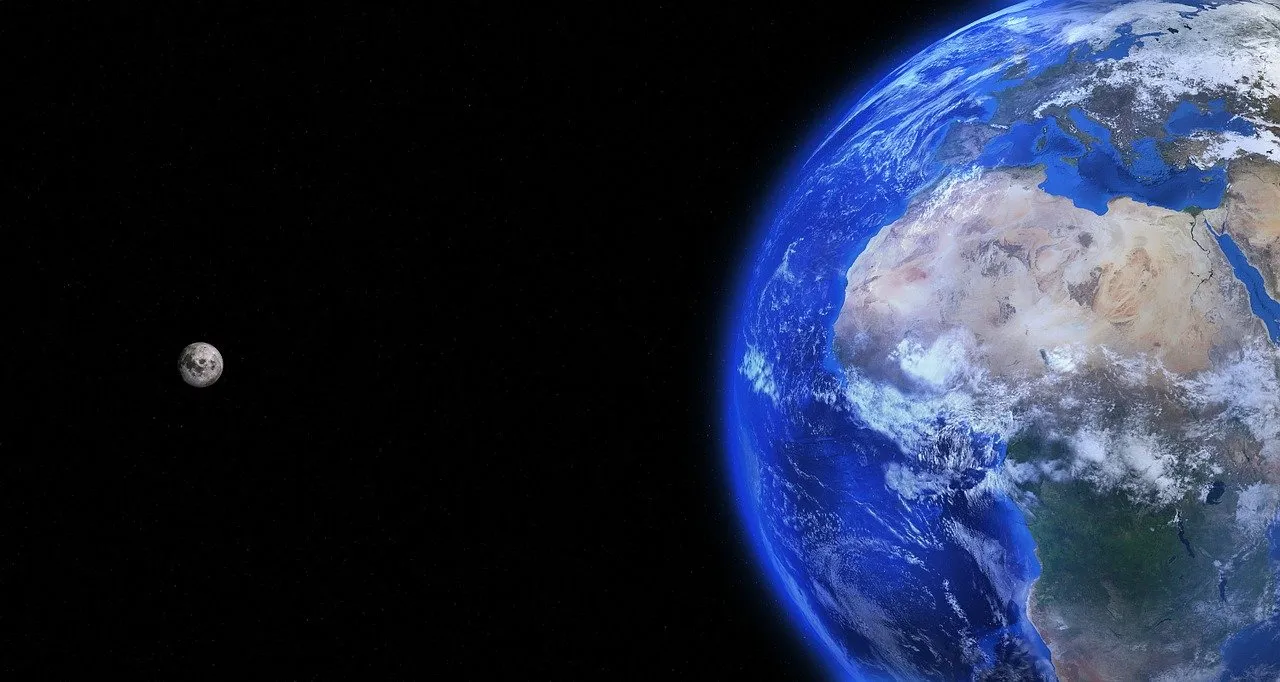
This is my entry for the “200 STEM Token Contest”.
The subject is, what do you feel will be the next biggest scientific or technological breakthrough in the next 10 years
source
In this post I’d like to discuss the upcoming possible breakthrough in translation industry which might be achieved by leveraging the blockchain technology.
As it was mentioned in the previous post, one of the problems of today’s science is “lost” science.
It refers to the situation when scientific discoveries get “lost” because of language barrier.
For example, this happened to the findings regarding bird flu virus strain called H5N1 which indicate that the virus also can infect pigs.
The findings became widely known only when an author on the papers, virologist Chen Hualan of Harbin Veterinary Research Institute in northeast China, presented them at the International Symposium on the Prevention and Control of SARS and Avian Influenza in Beijing on 20 August. The results, which show that the virus was found in 2003 in pigs in southeast China, were originally published in January (L. I. Haiyan et al. Chin. J. Prev. Vet. Med. 26, 1–6; 2004).
(Bird flu data languish in Chinese journals [1])
That delay in a half a year with translation of the findings of Chinese scientists could become the reason of substantial human (and animal) loss.
There’s a dilemma of English being the lingua franca of today’s science:
a)
English is considered as the language of international communication in science. By the way, it was not always the case. Near 100 years ago, German would have this status. And it would probably not lose it, if there had been no world wars.
The names of David Hilbert, Albert Einstein, Max Planck, Emil Fischer, Fritz Haber, Robert Koch and Rudolf Virchow would loom even larger, and German would probably have become the lingua franca of science—or rather, Naturwissenschaft.
Most of the ground‐breaking and classic papers in quantum physics were published in German.
(On science and English [2])
So, in order to publish your research in the high‐profile international journals and reach a wide audience, you need to present you results in English.
b)
On the other hand, while it’s important to communicate your findings in English, it’s also important to use other languages to do scientific discoveries.
Why?
As it was mentioned in the previous post,
the even worse news is that right now, almost everything we know about the human mind and human brain is based on studies of usually American English-speaking undergraduates at universities. That excludes almost all humans, right? So, what we know about the human mind is actually incredibly narrow and biased, and our science has to do better.
(How language shapes the way we think | Lera Boroditsky [4])
Our language is the product of collaboration of our brain with environment. Languages are part of our culture. Given that the environment is different in various parts of the world, it shouldn’t be a surprise that languages might reflect reality around us in a different way.
The studies showed that the brain of the different language speakers works differently
The critical difference in this case is not that English speakers cannot distinguish between light and dark blues, but rather that Russian speakers cannot avoid distinguishing them: they must do so to speak Russian in a conventional manner
(Russian blues reveal effects of language on color discrimination [3])
Russian speakers’ brain shows a surprised reaction during colour change, while the English speakers’ brain doesn’t.
In other words, given that the brain of different language speakers works differently, we might say that they perceive the reality differently. So, the more different language speakers deal with a particular scientific (and non-scientific) problem, the more chances are there to solve it. And I suppose, the more languages an individual knows, the more chances he/she has to solve his/her life problems (that knowledge makes our mind fore flexible/creative).
And there’re more than 7,110 languages currently spoken across the world [4].
And I’d like to follow Lera Boroditsky’s (one of the main contributors linguistic relativity theory) way of thinking, and consider our languages as “living things” (organisms).
And just like other organisms on the Earth, our languages might be in danger, which is what’s happening now
We're losing about one language a week, and by some estimates, half
of the world's languages will be gone in the next hundred years.
(How language shapes the way we think | Lera Boroditsky [4])
So, it’s important for us to preserve that linguistic diversity. For more information on this you can read one of my previous posts.
Every time we lose a language, we lose a potential way to make our mind more creative in problem solving.
So, to summarize, the dilemma is that on the one hand scientists are enforced to learn English. On the other hand, it’s important to preserve the diversity of our languages.
Taking into account a huge amount of research articles produced per year (near 2 million), seems like it’s hard to expect from the global translators community to translate all that into at least 100 languages [5]. Seems like we couldn’t manage to do this without the help of machines…
That’s where TranslateMe comes in.

It is
a network of people and machines
[source – whitepaper]
In a nutshell,
TranslateMe = Neural Machine Translation (NMT) + computing power + human input
The best thing about Neural Machine Translation is that the system can learn, and easily improve upon previous translations, if given corrections.
[source]
Well, there’s of course services like Google Translate.
What’s more, there’re such services like Microsoft Translator and DeepL Translator.
By the way, it was shown that DeepL Translator outperforms in the accuracy of translation tech giants like Google, Microsoft and Facebook and raised the bar for translations quality [6].
One of the reasons is that DeepL was launched by the Linguee team. The same team which is the owner of the Linguee service. It provides your access to a huge database of the multilingual corpora of texts created with the help of webcrawlers.
Well, I said that they raised the bar, but I suppose that TranslateMe can raise the bar even further.
Why?
TranslateMe is not the first solution which tries to combine human with machine power. Google Translate also allows you to correct translations.
What’s make TranslateMe different is that it’s powered by the bockchain (NEO).
And its advantages comes from there.
As you most likely know, there’re a huge amount of crypto-projects nowadays. And most of them (or all?) gives you a chance to be rewarded for your contributions.
That is the case with TranslateMe as well.
It gives a chance to be rewarded with TMN (TranslateMe Token) as translators, as all people (as long as you know at least 1 language).
You can try their MVP (Minimum viable product) in the form of Telegram Chat App right now (visit TranslateMe official web-site for more information and read one of my previous posts).
So, as opposed to Google Translate, with TranslateMe you can be rewarded ultimately with $ for your efforts. And, let’s admit that in our society (the monetary society) $ serves sometimes as a good way to motivate people. Among other advantages are
up to 90% reduction in cost to the user, complete privacy options and no restriction of use
(source)
To my knowledge, the main purpose of TranlsateMe is to create an API.
API stands for Application Programming Interface.
It’s an interface provided to use the service.
Just like web-site translation can be carried out with the help of Google Translate API, TranslateMe will provide its API as well. But it will be more powerful (with more languages supported (6,000+), cheaper and, I believe, with more accurate translation).
That API will be used to translate everything: web-sites, chats, comments on social media etc.
Heck, even blockchain-powered platforms like Steemit, Sapien etc. could use it to break the language barrier and be more productive, popular and accessible for people of different nationalities.
Now, let’s get back to the “lost” science problem.
Will TranslateMe solve the problem solely by using machines?
No, as it was mentioned a lot of times in their posts on Medium, machine translation will never become perfect. There will always be the need for human touch.
That’s why I’d say that with TranslateMe emergence translators will not lose their jobs, but rather translation industry will become more productive.
And given just the 2 million of scientific articles produced per year, I’d say that the global community of translators will have more than enough job to do.
What’s more, with TranslateMe translators will deal directly with clients without third parties which cut translators’ profits substantially.
In other words, TranslateMe just may make it possible to cope with translation of a huge amount of materials (not only scientific).
At the same time, all that translation activity (as on the chat apps powered by TranslateMe API, as done by translators with the help of other TranslateMe solutions) will help to preserve languages.
And translated materials and TranslateMe algorithm will serve as a great educational material for language learners, which, by the way, helps to solve another problem mentioned in the previous post (education).

To summarize, in the realm of science TranslateMe will help
- to solve the ”lost” science problem and manage translation of a huge amount of scientific (and non-scientific) materials;
- translators to be more productive and get higher profits compared with traditional freelance platforms;
- to preserve our languages, hence will help scientists to be more creative when it comes to problem solving (in other words, in might ultimately help to make scientific discoveries);
- with education, because it will become more accessible;
I’ll try to discuss all this in detail in the next posts devoted to TranslateMe.
Also I’d like to mention that TranslateMe seems like one of those rare projects where you might have enough motivation to contribute your time and efforts on a volunteer basis. But because of the blockchain you’re going to be rewarded for all your contributions.
Important
This post shouldn’t be considered as financial advice.
Even though TranslateMe seems like a project with a huge potential, please, always do your own research. You can talk with TranslateMe team on their Telegram group. You can find the link on the official web-site.
References:
Cyranoski, D. Bird flu data languish in Chinese journals. Nature 430, 955 (2004) doi:10.1038/430955a
Min‐Liang Wong. On science and English. EMBO Rep (2007)8:302-302
All images (without the license specified)/videos are used under the doctrine known in USA as "Fair Use" (similar doctrines are used in other countries). For more information visit the US Gov website
In order to increase the audience, this post was published today on Sapien and Narrative
